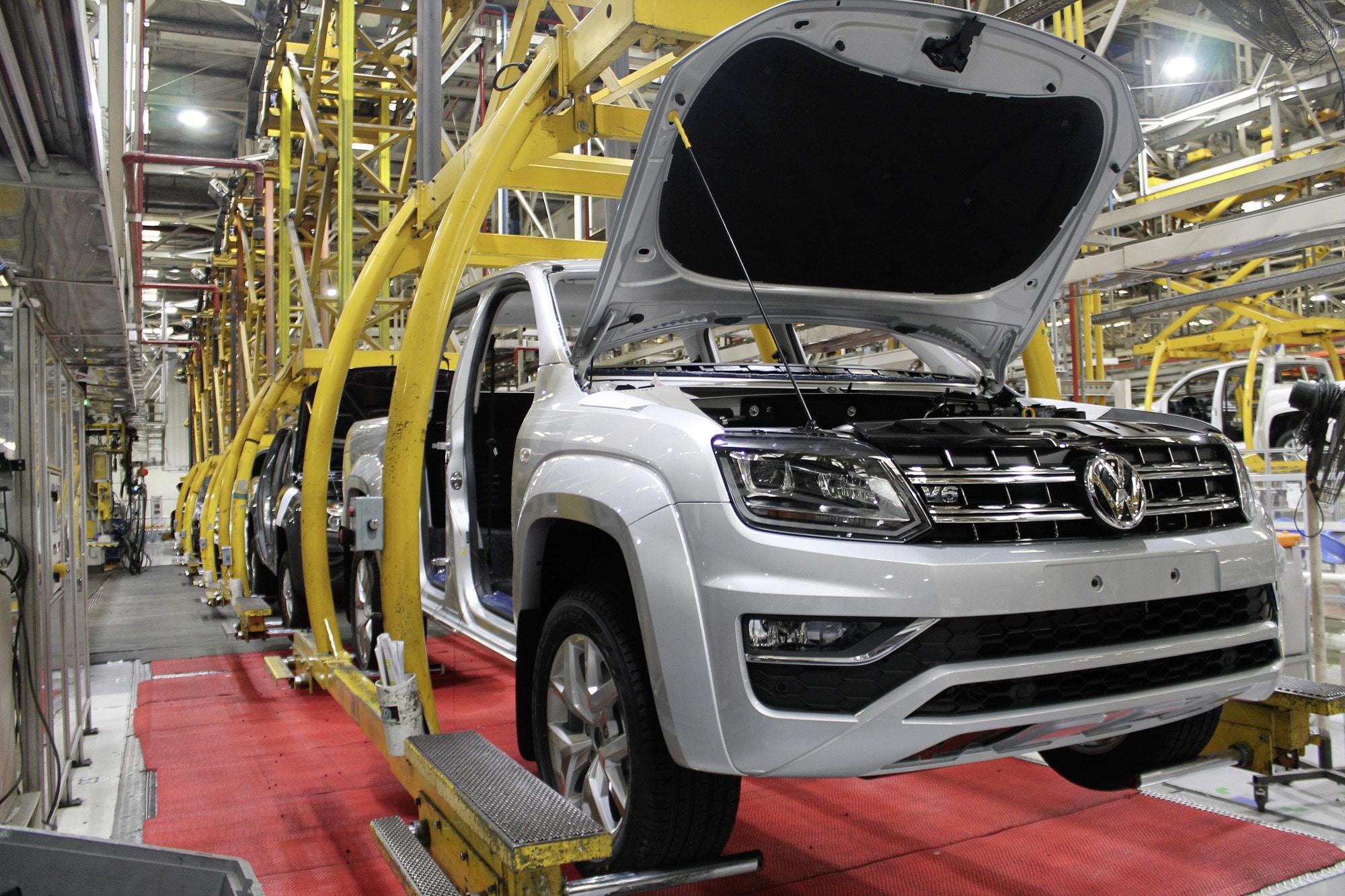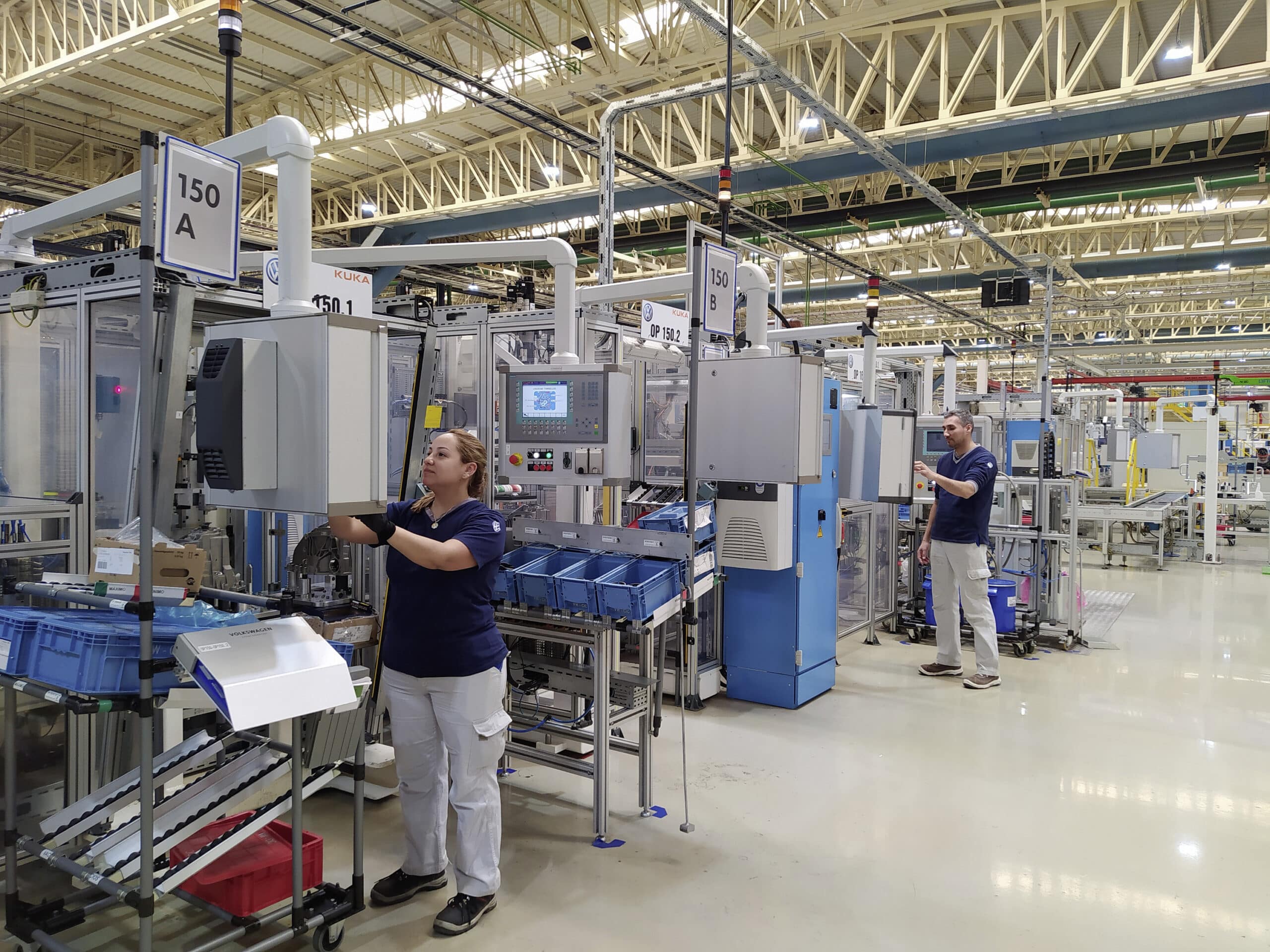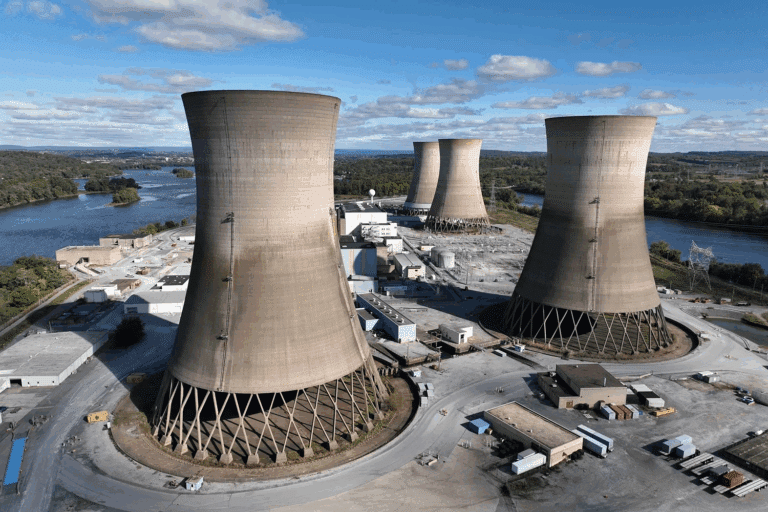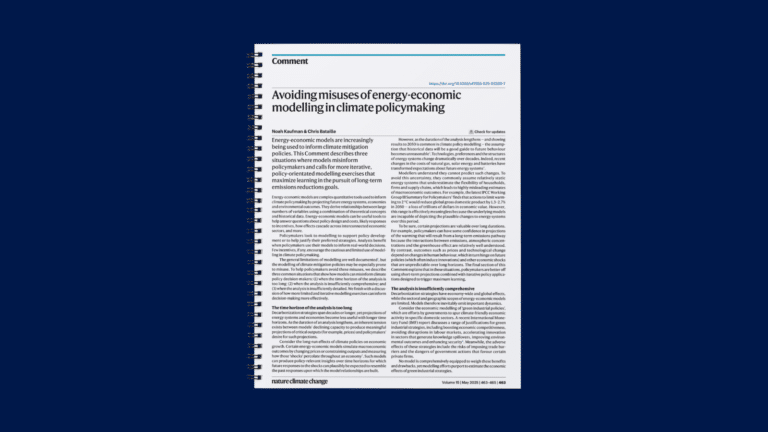This Energy Explained post represents the research and views of the author. It does not necessarily represent the views of the Center on Global Energy Policy. The piece may be subject to further revision. Contributions to SIPA for the benefit of CGEP are general use gifts, which gives the Center discretion in how it allocates these funds. Rare cases of sponsored projects are clearly indicated.
For a full list of financial supporters of the Center on Global Energy Policy at Columbia University SIPA, please visit our website at Our Partners. See below a list of members that are currently in CGEP’s Visionary Circle. This list is updated periodically.
In the introductory article of this series, the authors discussed the transformational nature of the European Climate Law and its related policy instruments, and their potential to drive climate change and sustainability collaboration with Latin American and Caribbean (LAC) countries.
Aiming to implement the European Climate Law, the “Fit for 55” European Union (EU) policy package includes major policy milestones for improving energy efficiency and reducing direct and indirect emissions in road transport, with important implications to boost electric mobility (IEA 2023a, BNEF 2023).
While Europe is implementing policies to support a profound transition of its automotive sector to electric vehicles (EV) and batteries—including through measures supporting domestic manufacturing—the LAC region, rich in minerals for the EV revolution, has only recently started considering actions to facilitate its own transition to electric mobility, although some of its capital cities are world leaders in terms of electric bus use.
This article explores opportunities for technological collaboration and mineral supply between the two regions to facilitate their transition toward e-mobility. The authors discuss opportunities to enhance LAC countries’ capacity to make the industrial transition while improving the EU’s ability to access primary materials required by its domestic EV industry.
Workers at a Volkswagen plant in Córdoba, Argentina. Photographs courtesy Volkswagen Argentina.
Policies Supporting Transport Electrification in the EU
The “Fit for 55” policies include:
- Regulatory phaseout of vehicles emitting CO2 at the tailpipe (European Council 2023a, European Commission 2023a).
- Minimum requirements regarding the rollout of charging infrastructure (European Commission 2023b).
- Specific measures regarding the production, use, and end-of-life management of batteries and their materials (European Commission 2022a), including carbon intensity and transparency regarding mineral sourcing.
- Specific requirements regarding the reduction of CO2 emissions associated with the production of energy used in transport and beyond, and increased reliance on renewable energy (European Commission 2023c).
These policies are paired with rules that define the functioning of the European electricity market in a way that enables EVs to become an asset for the electricity grid (e.g., by helping manage variability of supply and/or reducing demand peaks) rather than a liability (e.g., by stressing the grid at times of peak demand). Following the challenges related to recent gas price increases, these rules became the subject of an updated proposal (European Commission 2023d).
The EU has also proposed ambitious CO2 emissions regulations for trucks and buses (European Commission 2023e), complementing and enhancing earlier instruments more targeted at public fleets (European Commission 2019) and supplementing a new proposal for pollutant emissions reduction requirements for both light and heavy vehicles (European Commission 2023f).
Complementary measures include the Taxonomy Regulation defining economic activities that are in line with the net-zero requirements set for the EU (European Commission 2023g) and which types of infrastructure investments can be covered by funding distributed via the Next Generation EU instrument, as well as the EUR 800 billion temporary recovery instrument to support the EU’s economic recovery from the coronavirus pandemic (European, Commission, 2023h).
The increase in EV production and battery manufacturing (including different steps in their value chain) are part of the supply-side policies covered by the Green Deal Industrial Plan (European Commission 2023i), which encompasses the Net Zero Industry Act and the Critical Minerals Act.
Policies Supporting Transport Electrification in LAC Countries
Chile and Colombia have the second-largest fleet of electric buses after China (ICCT 2022). The LAC region is also a growing market for automobiles and other road vehicles (e.g., two-wheelers). Highly utilized vehicles in the region can deliver net savings in terms of total cost of ownership from the better energy efficiency of EVs.
A number of countries in Latin America (Brazil, Mexico, Argentina, and Colombia) have internal combustion engine (ICE) vehicle manufacturing plants (OICA 2022). As the market share of EVs increases (thanks to gains in cost competitiveness), these are at risk of diminishing asset values. To reverse this trend and seize opportunities from the technology transition that is being strongly and effectively pursued by all major global economies (including the United States and China), LAC countries need to find opportunities to leapfrog toward EVs, both in terms of technology adoption and participation in the global value chain (GVC).
Investments in the conversion to EV production in existing plants in the LAC region owned by European car manufactures (or their European branches), such as Volkswagen, Renault, and Stellantis, could become an important element of a climate partnership. The EU’s Global Gateway, including up to EUR 300 billion of investments for sustainable and high-quality projects in EU partner countries (European Commission 2023j), may be a relevant instrument to help facilitate this. It already includes a regional (LAC-wide) electro-mobility and transport partnership, support for industrial parks covering electric vehicles and battery production in Mexico, and a National Programme for the Promotion of Electric Urban Mobility in Uruguay, among other e-mobility activities (European Commission 2023k). The potential for joint investments in e-mobility were also specifically underlined in the European Commission’s “New Agenda” for relations between the EU and LAC for a stronger partnership.[1] This is envisioned alongside an open environment generated by trade and investment agreements with references to green and digital investment opportunities (European Commission, 2023l).
A recent report, “Facilitating a Transition to Zero-Emission Vehicles (ZEV) in the Global South” (Cazzola and Santos Alfageme 2023), provides a range of suggestions on ways to achieve progress on e-mobility in the LAC region and beyond. A key element is the need to spur local EV demand, which depends on a range of country-specific conditions and requires addressing equity-related challenges.
The LAC region can leverage its global importance as a supplier of raw materials to increase investment opportunities in the region as well as to help retain parts of emerging low-carbon value chains. A group of LAC countries, in particular Argentina, Bolivia, and Chile, hold a significant share of global lithium resources. Chile, Mexico, and Peru have significant copper reserves. Brazil holds very large nickel reserves, behind only Australia and Indonesia, and significant bauxite reserves (USGS 2023). These add to the growing relevance of Brazil, Mexico, Argentina, and Colombia as vehicle producers.
Mutually Beneficial Opportunities
Cooperation between the regions could lead to a reliable supply of critical minerals for Europe, crucial for mitigating supply chain risks related to strategic dependencies and enhancing the bloc’s economic resilience,[2] while ensuring greater market access for European technologies, capital, and goods.
However, this should not reinforce a traditional, asymmetrical division of labor between Europe and LAC countries, with the former having technological and investment capacity and the latter primary materials mainly destined for exports—an arrangement fueled by Europe’s access to cheaper capital and heavy reliance on imports of energy and raw materials. The goal should be to provide opportunities to enable LAC countries to industrialize key sectors and add value to their productive capacity as a result of the clean energy and technology transitions (Borrel 2022). Attracting investments for material processing and manufacturing of finished or semi-finished products, including both EV batteries and EVs, that are part of the GVC of low-carbon content is crucial for economic growth and overall development, and in line with responsible business conduct, according to the OECD (OECD n.d.).
Conclusion
High-quality projects, supported by the EU’s Global Gateway, could boost investments in the LAC region toward the electrification of public transportation, and—along with regulation, subsidies, and tax policies—stimulate an EV transition and a transformation of the region’s automobile industry. In tandem, these investments could be matched with commitments for a reliable supply of critical minerals for Europe, facilitating access to raw materials that are essential for its own e-mobility transition.
CGEP’s Visionary Circle
Corporate Partnerships
Occidental Petroleum Corporation
Tellurian Inc
Foundations and Individual Donors
Anonymous
Anonymous
the bedari collective
Jay Bernstein
Breakthrough Energy LLC
Children’s Investment Fund Foundation (CIFF)
Arjun Murti
Ray Rothrock
Kimberly and Scott Sheffield
Notes
[1] In addition, in terms of transport, to increases in safe and sustainable air connectivity and upgrading public transport systems and infrastructure, making them cleaner, more energy efficient, and innovative.
[2] The Critical Raw Materials Act focuses on 34 critical raw materials and 16 strategic raw materials. The most relevant ones for the EU-LAC dialogue are aluminum, copper, rare earth elements, lithium, and nickel.
References
BNEF (Bloomberg New Energy Finance) (2023), Electric Vehicle Outlook, https://about.bnef.com/electric-vehicle-outlook/
Borrel, J. (2022), Re-launching the partnership between the EU and Latin America and the Caribbean, European External Action Service, https://www.eeas.europa.eu/eeas/re-launching-partnership-between-eu-and-latin-america-and-caribbean_en
Cazzola, P. and Santos Alfageme, M. (2023), Facilitating a transition to zero-emission vehicles in the Global South, https://doi.org/10.7922/G2PK0DGM
European Commission (2019), Clean Vehicles Directive, https://transport.ec.europa.eu/transport-themes/clean-transport/clean-and-energy-efficient-vehicles/clean-vehicles-directive_en
European Commission (2022a), Green Deal: EU agrees new law on more sustainable and circular batteries to support EU’s energy transition and competitive industry, https://ec.europa.eu/commission/presscorner/detail/en/ip_22_7588
European Commission (2023a), Regulation (EU) 2023/851 of the European Parliament and of the Council of 19 April 2023 amending Regulation (EU) 2019/631 as regards strengthening the CO2 emission performance standards for new passenger cars and new light commercial vehicles in line with the Union’s increased climate ambition, https://eur-lex.europa.eu/legal-content/EN/TXT/?uri=CELEX:32023R0851
European Commission (2023b), European Green Deal: ambitious new law agreed to deploy sufficient alternative fuels infrastructure, https://ec.europa.eu/commission/presscorner/detail/en/IP_23_1867
European Commission (2023c), Renewable Energy Directive, https://energy.ec.europa.eu/topics/renewable-energy/renewable-energy-directive-targets-and-rules/renewable-energy-directive_en
European Commission (2023d), Electricity market design, https://energy.ec.europa.eu/topics/markets-and-consumers/market-legislation/electricity-market-design_en
European Commission (2023e), European Green Deal: Commission proposes 2030 zero-emissions target for new city buses and 90% emissions reductions for new trucks by 2040, https://ec.europa.eu/commission/presscorner/detail/en/ip_23_762
European Commission (2023f), European vehicle emissions standards – Euro 7 for cars, vans, lorries and buses, https://ec.europa.eu/info/law/better-regulation/have-your-say/initiatives/12313-European-vehicle-emissions-standards-Euro-7-for-cars-vans-lorries-and-buses
European Commission (2023g), EU taxonomy for sustainable activities, https://finance.ec.europa.eu/sustainable-finance/tools-and-standards/eu-taxonomy-sustainable-activities_en
European Commission (2023h), NextGenerationEU, https://commission.europa.eu/strategy-and-policy/eu-budget/eu-borrower-investor-relations/nextgenerationeu_en
European Commission (2023i), The Green Deal Industrial Plan: putting Europe’s net-zero industry in the lead, https://ec.europa.eu/commission/presscorner/detail/en/ip_23_510
European Commission (2023j), Global Gateway, https://commission.europa.eu/strategy-and-policy/priorities-2019-2024/stronger-europe-world/global-gateway_en
European Commission (2023k), EU-Latin America and Caribbean Investment Agenda – Partnerships on Digital, Climate and Energy, Transport, Health, Education and Research, https://international-partnerships.ec.europa.eu/system/files/2023-07/EU-Latin-America-Investment-Agenda-EN.pdf
European Commission (2023l), A New Agenda for Relations between the EU and Latin America and the Caribbean, Joint communication to the European Parliament and the Council, https://eur-lex.europa.eu/legal-content/EN/TXT/HTML/?uri=CELEX%3A52023JC0017
European Council (2023), ‘Fit for 55’: Council adopts regulation on CO2 emissions for new cars and vans, https://www.consilium.europa.eu/en/press/press-releases/2023/03/28/fit-for-55-council-adopts-regulation-on-co2-emissions-for-new-cars-and-vans/
ICCT (International Council on Clean Transportation) (2022), Zero-emission vehicle deployment: Latin America, https://theicct.org/publication/hvs-zev-deploy-latam-apr22
IEA (international Energy Agency) (2023), Global EV Outlook 2023, https://www.iea.org/reports/global-ev-outlook-2023
OECD (Organisation for Economic Cooperation and Development) (n.d.), Responsible Business Conduct, the new normal for a sustainable future, https://mneguidelines.oecd.org/
OICA (International Organization of Motor Vehicle Manufacturers) (2022), World motor vehicle production by country/region and type, OICA correspondents survey, https://www.oica.net/wp-content/uploads/By-country-region-2022.pdf
USGS (United States Geological Survey) (2023), Mineral commodity summaries 2023, https://pubs.usgs.gov/periodicals/mcs2023/mcs2023.pdf











